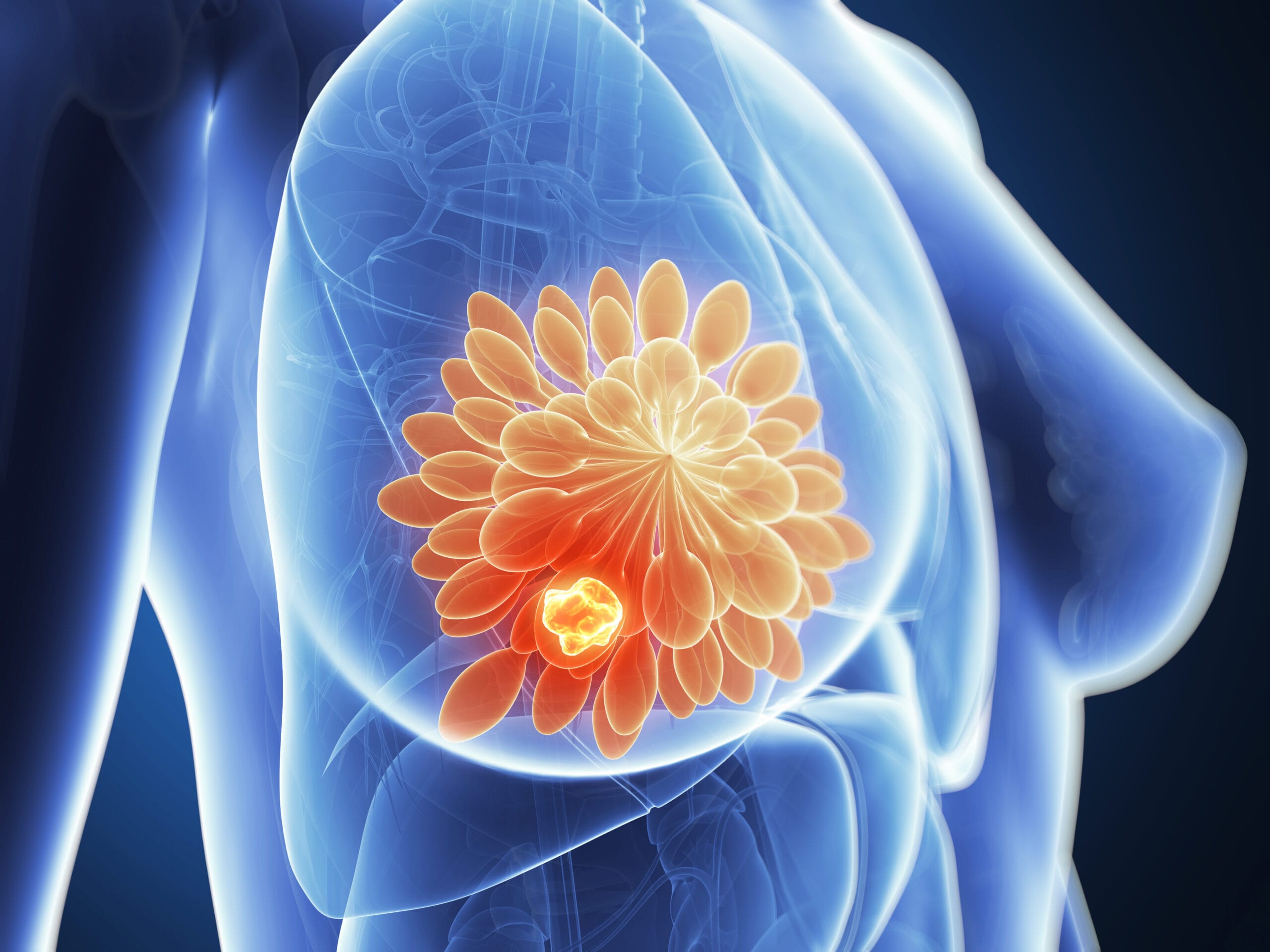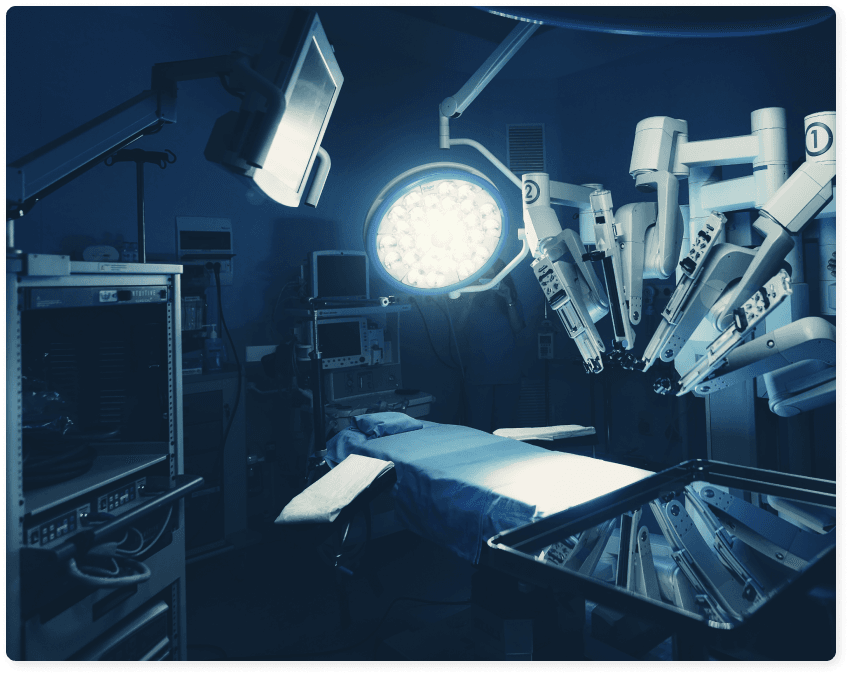Breast cancer
Breast Surgery has made significant progress in the treatment of breast cancer in recent years, emphasizing the simultaneous achievement of the best possible oncological and cosmetic outcome for each patient.
Dr. Konstantinidis and his Surgical Team perform the full range of breast surgeries focusing on the most comprehensive, effective, and least invasive treatment methods.
Together with an interdisciplinary team of leading specialists, such as oncologists, radiologists and pathologists, Dr. Konstantinidis and his Surgical Team focus on the needs of each patient individually, with the main goal of preserving the breast, where possible, and incorporating plastic surgery techniques, with which the breast is reconstructed after the removal of the tumor.

What is Breast Cancer?
Breast cancer is the abnormal growth of cells that surround the mammary glands and lactiferous ducts of the breast. Sometimes it starts with the fatty and fibrous tissue of the breast.
Cancer cells grow uncontrollably and over time can spread to the surrounding breast tissue.

The cancer is then called invasive and has the potential to spread to other parts of the body.
Cancer cells can be more or less aggressive and often have the ability to divide very quickly and some of them to spread beyond the breast to other parts of the body, i.e. to metastasize.
Why choose Dr. Konstantinidis?
Dr. K. M. Konstantinidis and his team possess vast experience in the field of laparoscopic and robotic surgery.
Dr. Konstantinidis is the pioneer of Robotic Surgery in Greece and one of the leading figures internationally in the field, having performed the largest series of General Surgery operations in Europe with the innovative Da Vinci® robotic system, including inguinal hernia surgeries.
What are the symptoms of Breast Cancer?
At an early stage, breast cancer causes no symptoms. These usually occur when the tumor is large enough to feel like a lump in the breast or when the cancer has spread to surrounding tissues and organs.
The most common symptom of advanced breast cancer is a firm or hard lump, which looks clearly different from the rest of the breast and is attached to the skin or surrounding breast tissue.
The lump does not shrink in size nor does it come and go with menstruation. It can be soft in texture and usually does not cause pain.
In lobular carcinoma, usually no lump is formed, but the breast tissue becomes thicker or harder.
Symptoms of ductal and lobular breast cancer also include:
redness or pain
swelling of the lymph nodes in the armpit
changes in the shape or size of the breast
secretion of fluid or blood from the nipple
Gradually, as the disease worsens and spreads to other parts of the body, further symptoms may appear, such as:
bone pain
weight loss
motion sickness
loss of appetite
jaundice
breathing difficulty
cough
headache
muscular weakness
In inflammatory breast cancer, the breast is hot and shows redness and swelling, as if it had an infection. The nipple may reverse inwards and secrete fluids. Usually, no lump is felt in the breast, but the whole breast is swollen.
What types of Breast Cancer are there?
The most common type of non-invasive breast cancer, which has not spread beyond the lobes or milk ducts, is called non-invasive ductal carcinoma of the breast (Ductal Carcinoma in Situ, DCIS). It is the earliest form of breast cancer.
A less common type is non-invasive lobular carcinoma of the breast (LCIS), which involves the formation of cells in the lobes that may be the basis for cancer growth. However, these cells alone do not constitute cancer.
A rarer type is Paget’s disease, which causes a red, scaly rash on the nipple skin and is usually associated with DCIS or invasive breast cancer.
The most common type of invasive breast cancer is the invasive ductal carcinoma. This type is based on the cells of the milk ducts and usually has a focus on one breast. However, it is not excluded that he has a second in the same or the other breast.
Invasive lobular breast cancer is less common and starts in the mammary glands of the lobes. It is sometimes found on both breasts (bilateral).
Inflammatory breast cancer is extremely rare and aggressive and is so named because the breast is inflamed, red and swollen.
What are the risk factors for Breast Cancer?
To date, no clear cause has been identified that causes breast cancer. However, there are some risk factors that increase the likelihood of developing the disease, such as:
- age – breast cancer is more common in women over 50 years
- family history of breast cancer
- pre-existing breast cancer
- gene mutation (BRCA-1 and BRCA-2 genes)
- family history of ovarian cancer
- age of childbirth – women who did not have children or whose first child was born after the age of 30
- menstrual age – early periods at a young age (under 12 years)
- menopause later (over 55) increases the risk of breast cancer
- recent research shows that women who start smoking regularly within 5 years of the onset of menstruation are 70% more likely to develop breast cancer before the age of 50 than non-smokers
- radiation therapy to the chest, especially before the age of 30
- excessive alcohol consumption
- taking estrogen-containing birth control pills slightly increases the risk if used for many years
- the presence of atypical lesions in the breast
- obesity with excessive intake of calories and fat
The risk of breast cancer associated with these factors is often statistically quite small. In fact, for most women, the main risk factor is age over 50 years.
How is Breast Cancer diagnosed?
The diagnosis of breast cancer includes a detailed physical examination and a complete history from a doctor, who may suggest the following tests:
Mammography and ultrasound of the breast and peripheral lymph nodes
MRI of the breast, especially in cases of familial breast cancer associated with BRCA gene mutations, breast implants or large discrepancies between conventional imaging and clinical examination.
Cytologic evaluation, which is performed with a fine needle (FNA – Fine Needle Aspiration)
Histopathology, which involves having a biopsy with a larger needle under ultrasound or stereotactic guidance (core biopsy). Histopathology is important for accurately staging the cancer.

How is Breast Cancer treated?
The best approach to managing breast cancer patients requires the collaboration of various medical specialties.
Treatment options include various therapeutic approaches, such as:
- Radiation therapy: It involves the use of high-energy X-rays locally to kill scattered cancer cells that may remain in the breast or lymph nodes after surgery, but also helps prevent breast cancer from recurring.
- Chemotherapy: It involves administering drugs that attack and kill cancer cells. It can be administered before surgery, after surgery or independently. It is also applied to prevent recurrence of breast cancer anywhere in the body.
- Hormone therapy: It prevents cancer cells throughout the body from receiving the hormones they need to grow and thus prevents cancer recurrences. It is applied in patients whose cancer cells respond to estrogen or progesterone. The treatment is carried out with pills and lasts up to 5 years.
However, surgery plays a prominent role, since malignancies must be removed along with part or all of one or both breasts, as well as adjacent lymph nodes that may have been exposed to the disease.
What type of surgery should I choose?
Depending on the type of cancer, the size of the tumor, the presence of infiltrated lymph nodes locally or distant metastases, the surgeon and the patient decide on the treatment procedure, which may include breast conserving surgery with good cosmetic outcome, without risking the oncological outcome and the prognosis for survival.
Breast cancer surgery may include breast augmentation surgery or radical surgery.
Ogectomy with resection of sentinel lymph node
Breast conserving surgeries
Lumpectomy: In recent years, breast surgeons have been employing less radical techniques to treat breast cancer, if appropriate. One such is lumpectomy, which involves the removal of the cancerous tumor and surrounding tissue conserving the rest of the breast.
Lumpectomy is preferred as a treatment option when the size of the tumor in relation to the size of the breast allows it and is considered oncologically safe.
It is important that the tumor is removed without dispersing its cells and the delimitation is as set out in international literature, depending on the type of cancer.
The application of chemotherapy before surgery to shrink the tumor is crucial.
Segmental Resection – Quadrantectomy: This is a surgical technique that conserves the breast and involves removing a part of the breast, including the lobes and milk ducts.
In particular, the part or quadrant of the breast that contains the tumor is removed and the rest of the breast is “squeezed” after mobilization of the remaining gland and often the skin.
The removed part is sent for rapid biopsy and for delimitation.
Segmental resection – quadrantectomy has a particularly good oncological outcome in patients with tumors that have spread to the milk ducts.
Oncoplasty: This term is relatively new and includes those types of surgery, in which a part of the breast is excised according to the type of tumor, the preparation is sent for rapid biopsy and delimitation, and then the shape of the breast is restored with plastic surgery techniques, to minimize or even avoid asymmetry in relation to the other breast (tumor adapted reduction).
In some cases, simultaneous reduction – augmentation surgery can be performed on the corresponding breast, in order to achieve symmetry, depending on the patient’s desire.
Radical Surgery (Mastectomy)
A mastectomy is a kind of surgery that involves removing the breast. The particular type of surgery to be selected depends on the size of the tumor and how far it has progressed.
There are two types of mastectomy:
Simple Mastectomy: During a simple mastectomy, the mammary gland is removed as well as a strip of skin along with the nipple.
Modified Radical Mastectomy: During radical modified mastectomy, the mammary gland, a strip of skin along with the areola, the nipple, and the axillary lymph nodes are removed.
When is a Mastectomy necessary?
One of the first questions patients ask is when a mastectomy is necessary. Here it should be emphasized that mastectomy can usually be avoided in 60% -70% of cases, and in countries where patients have frequent check-ups, even in 85% of cases.
The indication for mastectomy or breast conservation surgery should be discussed by the patient with her surgeon and she should request full information about the surgical techniques and options.
What is a sentinel lymph node biopsy?
In the case of invasive cancer, axillary lymph node removal should be performed.
The purpose of this removal is to stage the disease, prescribe further treatment and prevent local recurrences in the axillary lymph nodes.
Because lymph node removal is sometimes accompanied by upper limb morbidity, many surgeons prefer to first examine the sentinel lymph node (the first lymph node to which cancer cells would infiltrate) and if the biopsy is positive to then proceed in axillary lymph node removal.
The biopsy involves local injection of radioisotopes. This method is indicated only in cases of small tumors.
Plastic Rehabilitation after mastectomy or omectomy
What is Breast Reconstruction Surgery?
In cases of mastectomy, breast reconstruction surgery is an option to improve both posture and balance, as well as the patient’s psychological state.
Breast reconstruction can be carried out in the first year after mastectomy or later.
There are two basic types of breast reconstruction surgery.
One involves the placement of a skin expander followed by a breast implant, while the other uses the patient’s own tissues to re-construct the breast.